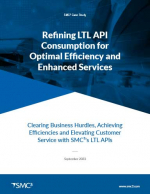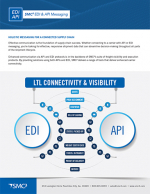The LTL Industry Has Shifted; Don’t Get Left in the Dark
Old pricing benchmarks work in today’s marketplace because carriers offer shippers discounts on these outdated rates, but this practice masks the true costs of moving goods.
A Key Component of the Modern Supply Chain
Shippers and 3PLs face a multitude of pricing and service options in the modern transportation landscape; each of today’s top 25 LTL carriers has different business needs and service offerings, and that is reflected in the way they calculate LTL shipping rates.
Without a neutral, standardized pricing foundation that takes shifting freight flows and modern market pressures into account, it’s impossible for customers to accurately and reliably compare one LTL carrier to the next.
LTL is extremely vital to the supply chain, but the shipment-rating process is awash in complexity because the act of pricing out LTL - freight shipments that don’t fill an entire trailer - is inherently challenging.
Freight that takes up less space than an entire truckload is most often rated using a classification metric - in a sense, providing shipments with a generalized price point based on the type of goods shipped.
In the current market, carriers and shippers have been negotiating discounts off the base rate back and forth for decades, leading to discount percentages that span multiple decimal places.
Some shippers and 3PLs use transportation management systems that can’t handle discounts winnowed down multiple decimal places.
Carriers provide rates based on their individual transportation networks, publishing rates that balance their headhaul and backhaul lanes, and account for terminal locations and operational characteristics.
By using only these rates, freight transportation buyers are reading a story of the LTL market from the carriers’ perspective.
By using a neutral, reliable base metric, 3PLs and other stakeholders can see the true market-level pricing of moving freight.
Download this white paper and find out how CzarLite gives customers a streamlined rating experience.
What’s Related



Favorites





